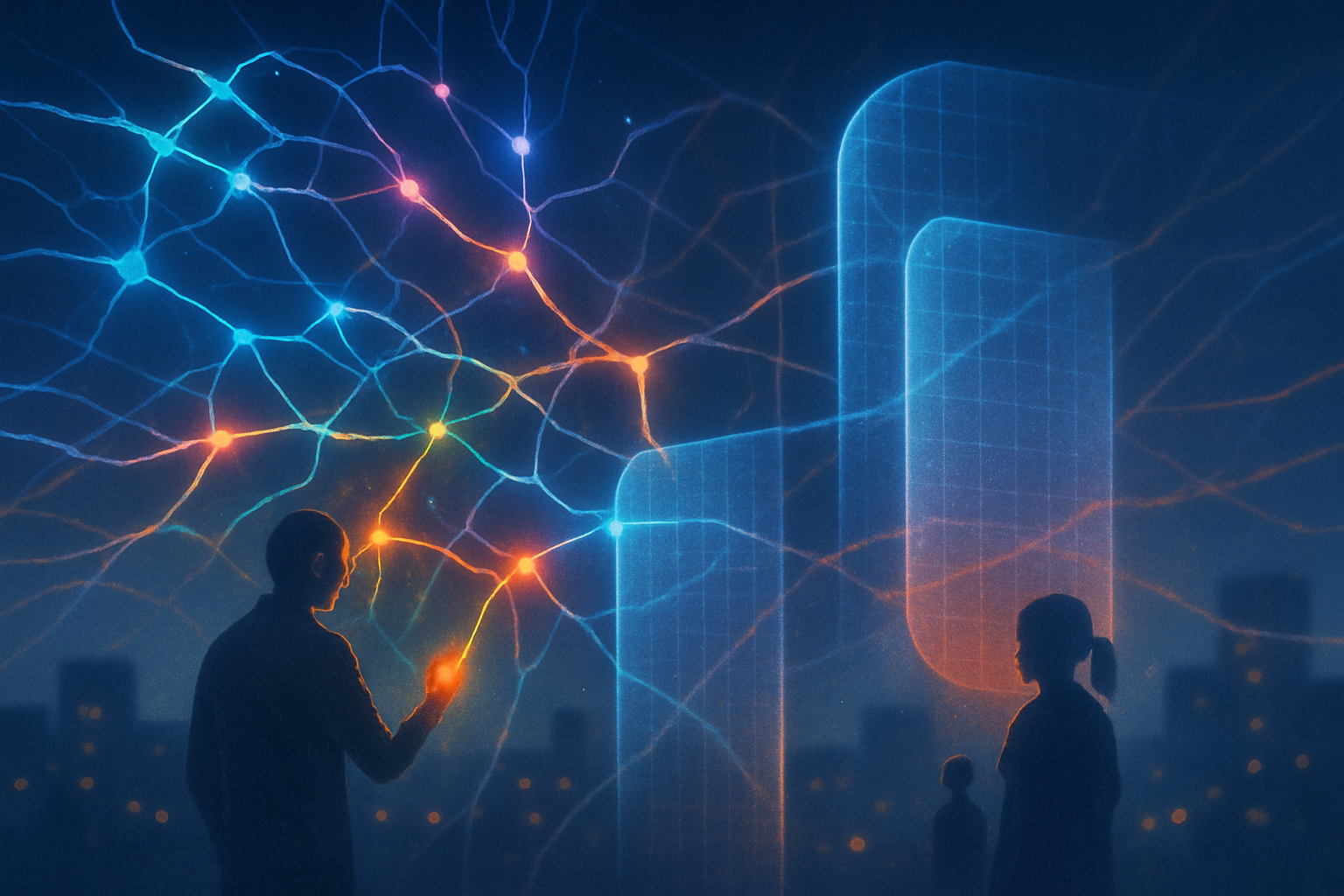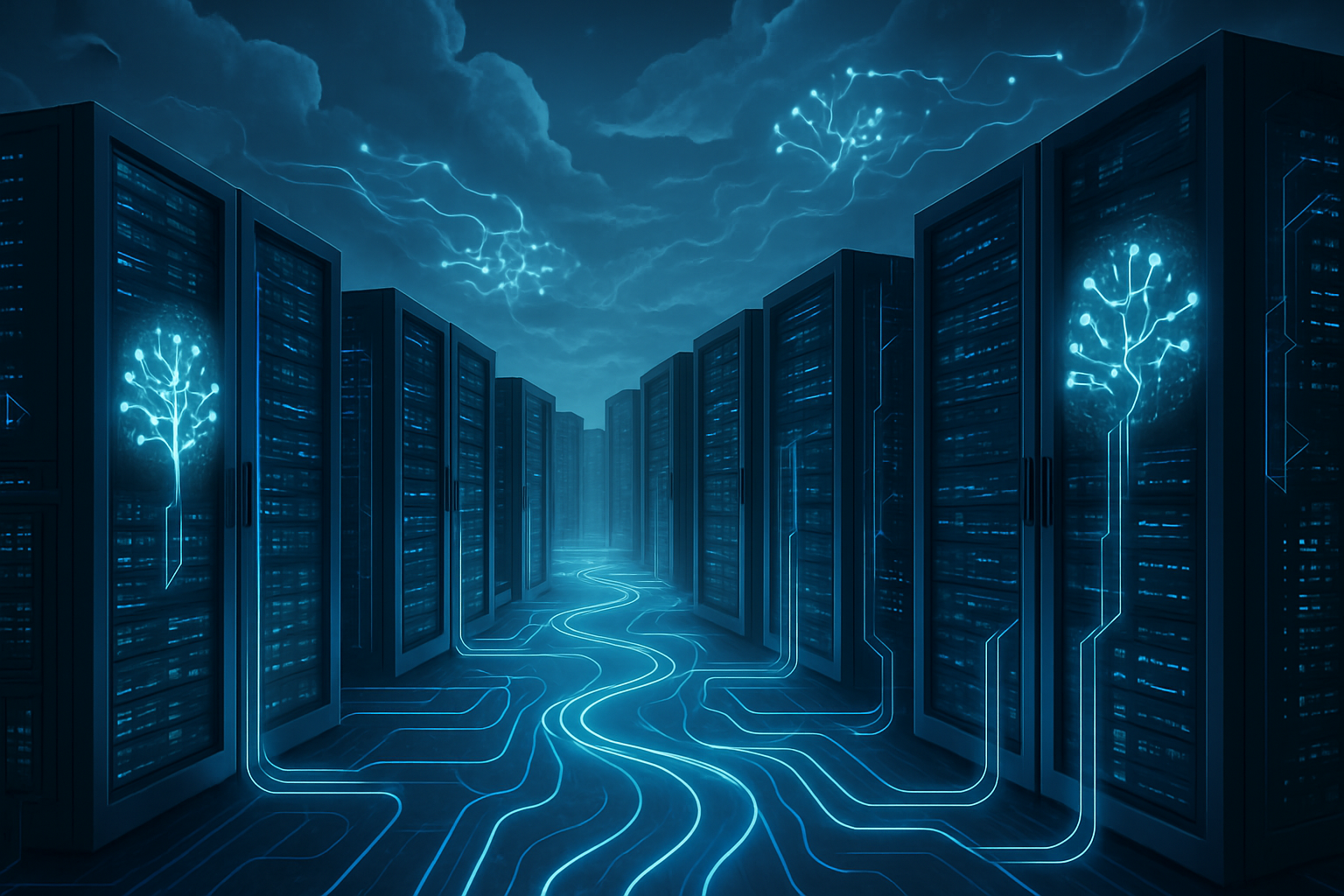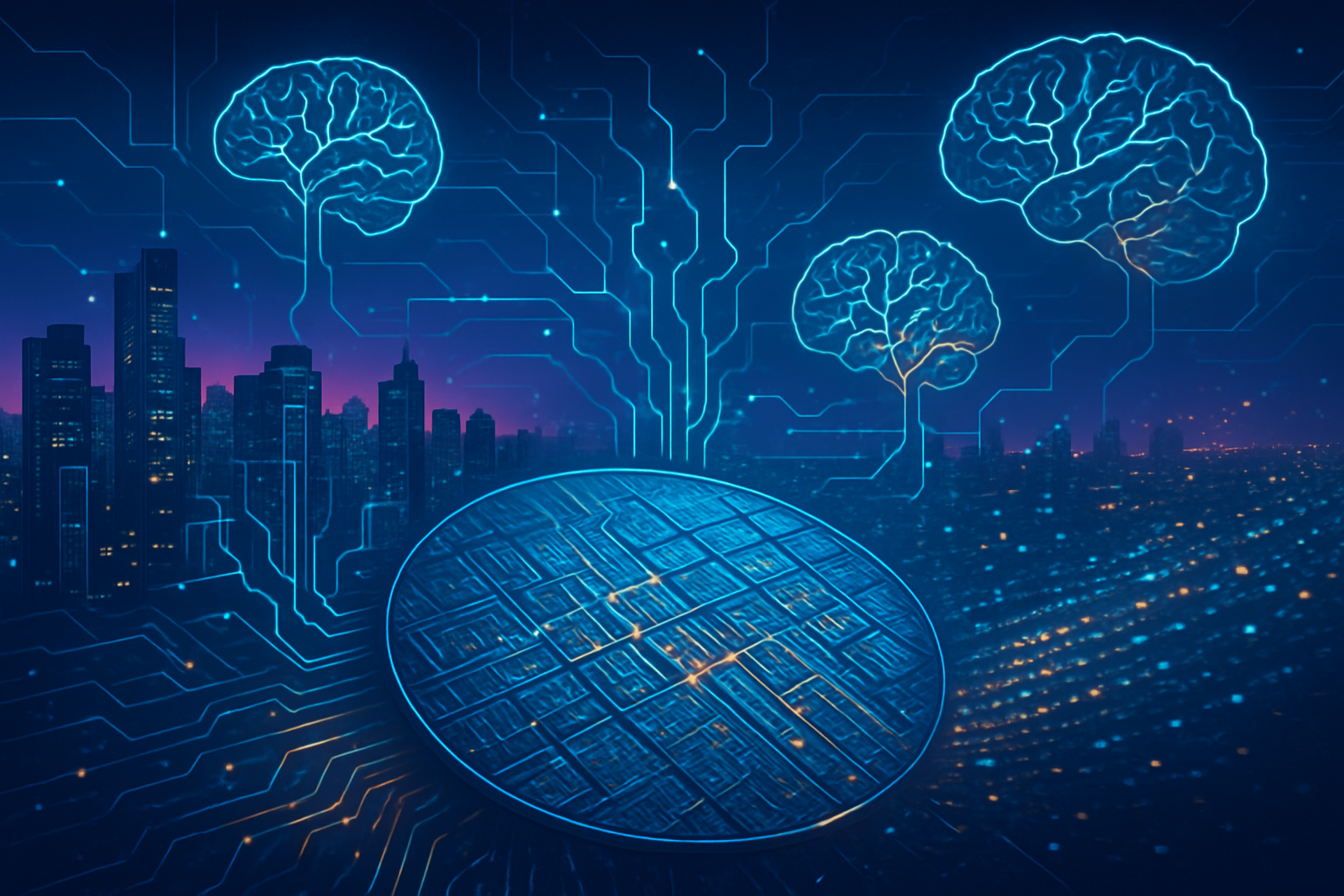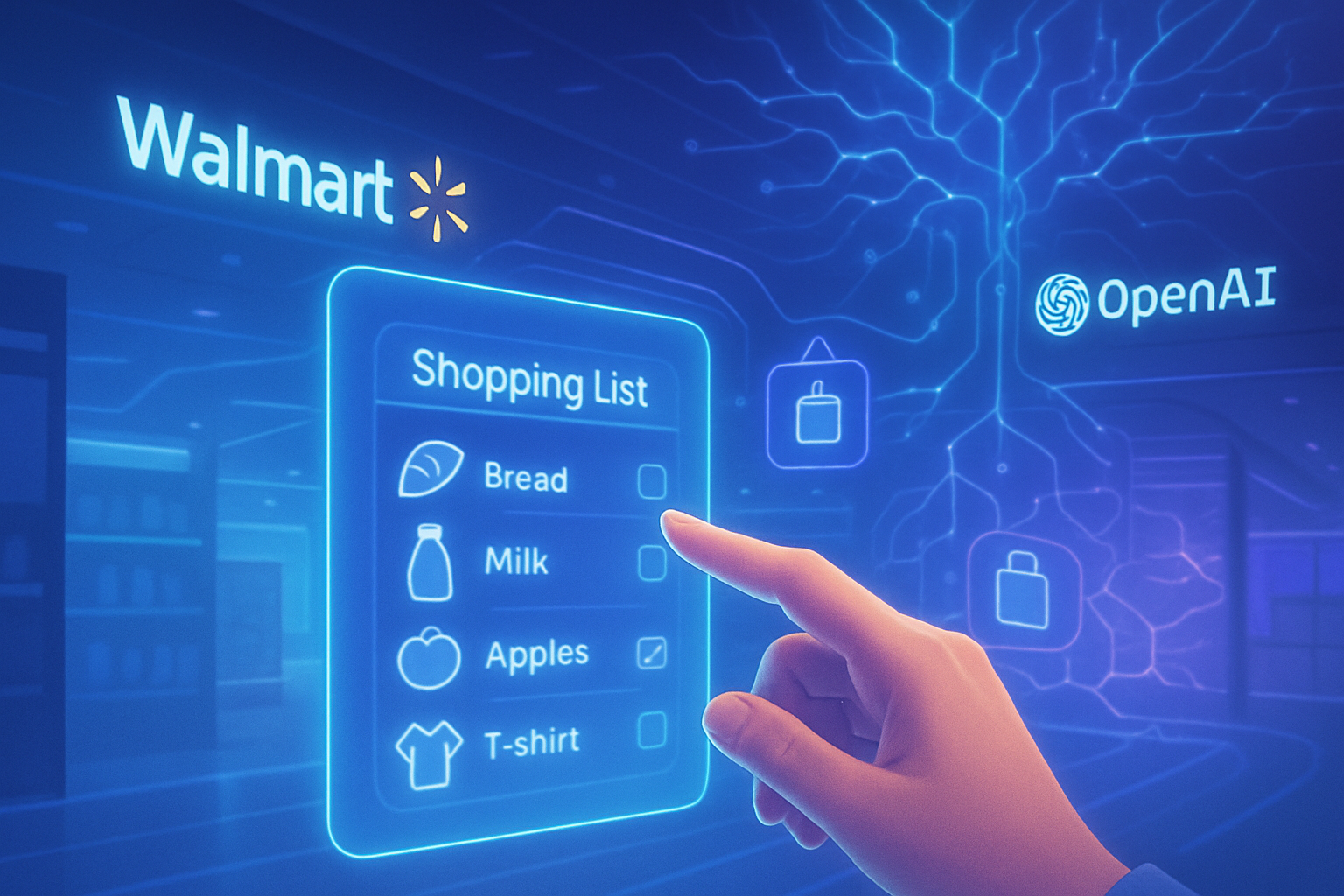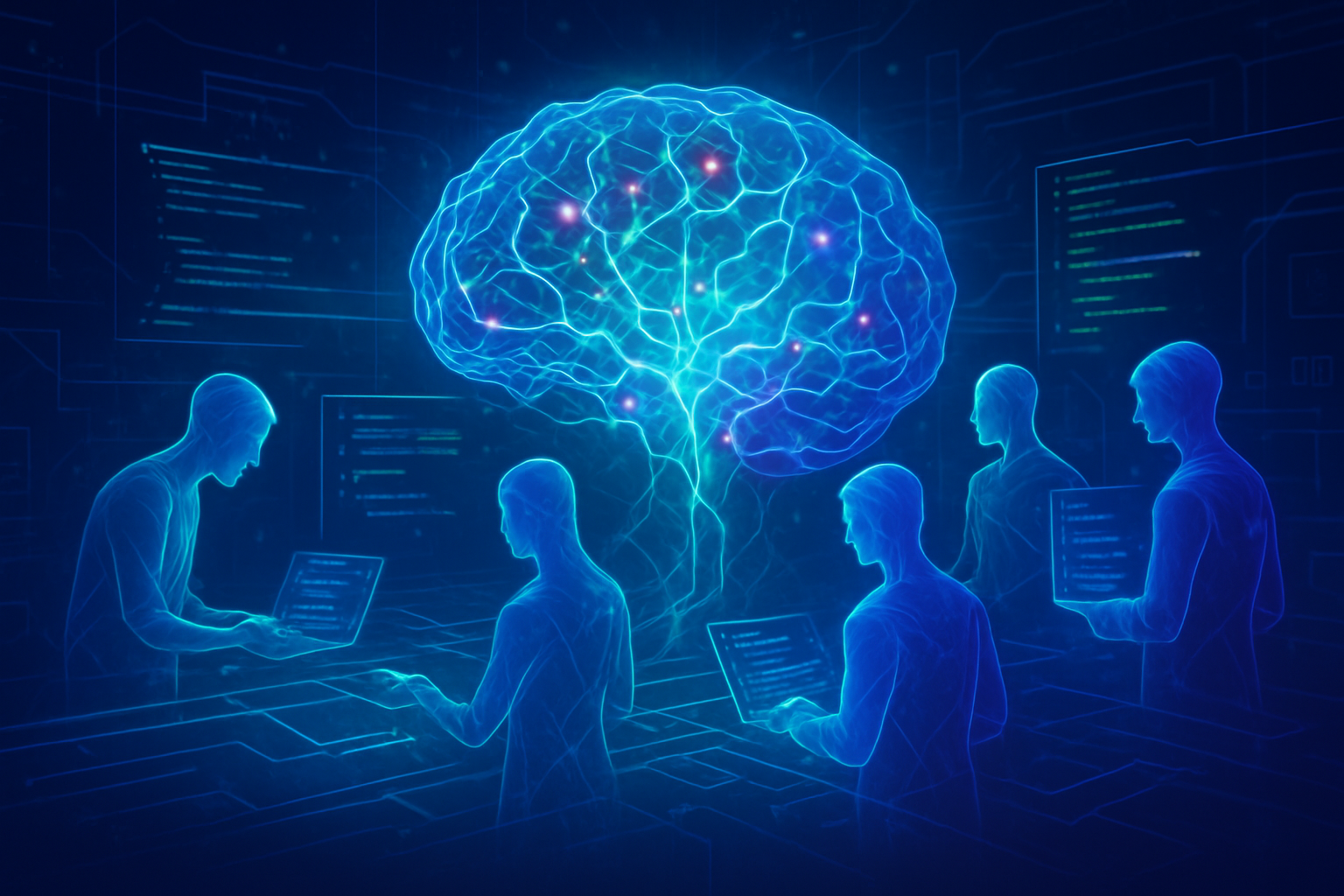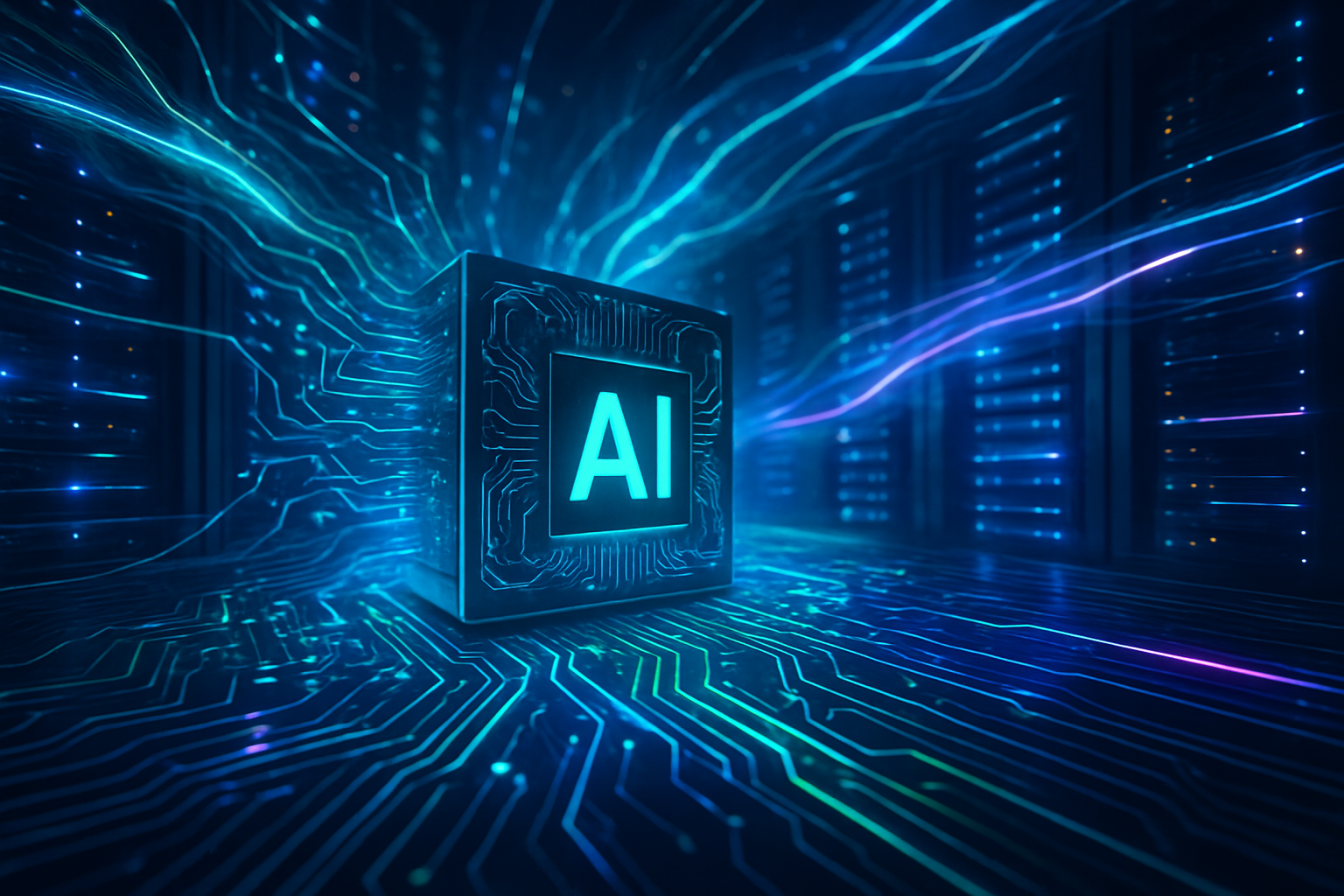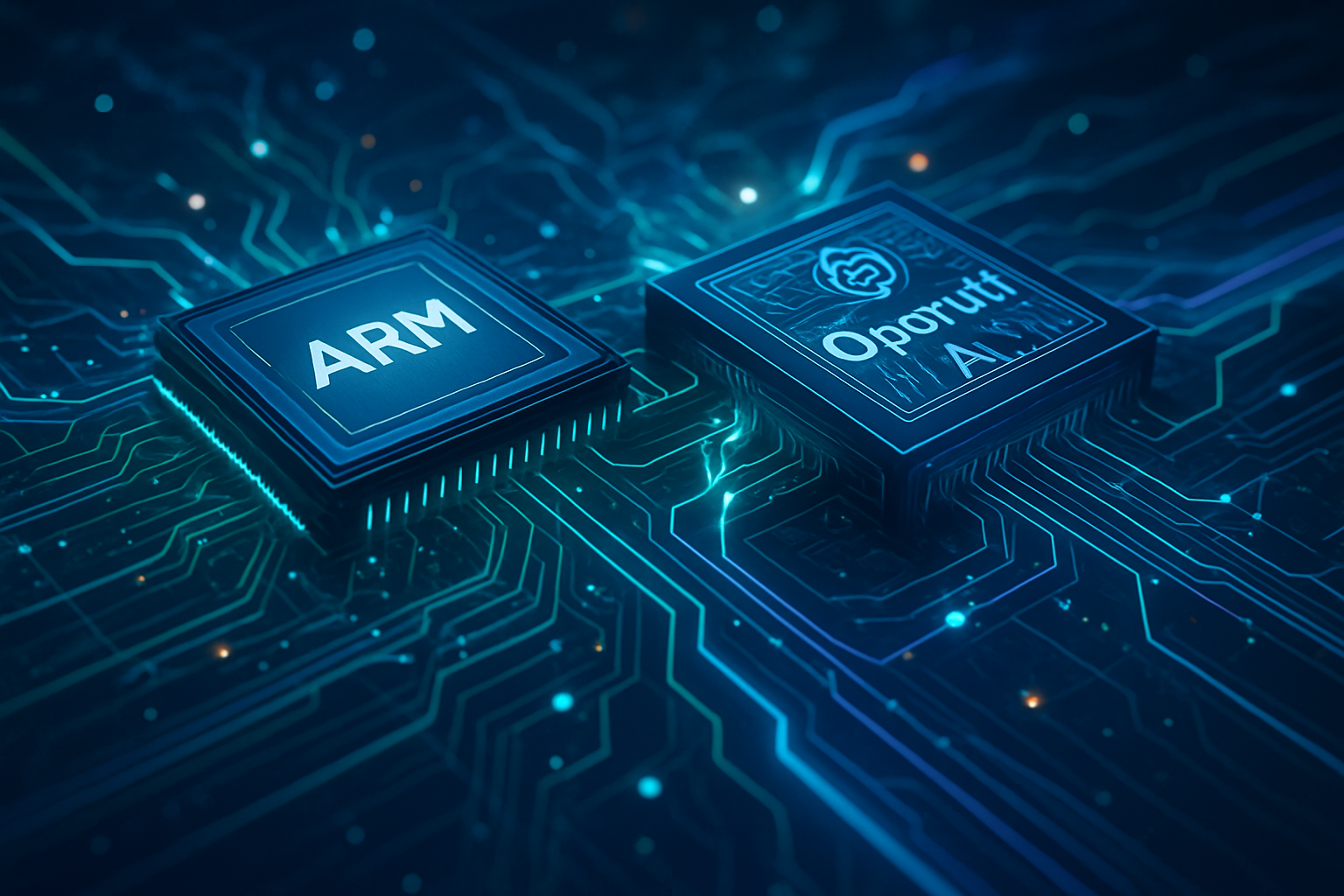The global semiconductor industry is currently experiencing an unparalleled boom, with stock prices surging to new financial heights. This dramatic ascent, dubbed the "AI Supercycle," is fundamentally reshaping the technological and economic landscape, driven by an insatiable global demand for advanced computing power. As of October 2025, this isn't merely a market rally but a clear signal of a new industrial revolution, where Artificial Intelligence is cementing its role as a core component of future economic growth across every conceivable sector.
This monumental shift is being propelled by a confluence of factors, notably the stellar financial results of industry giants like Taiwan Semiconductor Manufacturing Company (TSMC) (NYSE: TSM) and colossal strategic investments from financial heavyweights like BlackRock (NYSE: BLK), alongside aggressive infrastructure plays by leading AI developers such as OpenAI. These developments underscore a lasting transformation in the chip industry's fortunes, highlighting an accelerating race for specialized silicon and the underlying infrastructure essential for powering the next generation of artificial intelligence.
Unpacking the Technical Engine Driving the AI Boom
At the heart of this surge lies the escalating demand for high-performance computing (HPC) and specialized AI accelerators. TSMC (NYSE: TSM), the world's largest contract chipmaker, has emerged as a primary beneficiary and bellwether of this trend. The company recently reported a record 39% jump in its third-quarter profit for 2025, a testament to robust demand for AI and 5G chips. Its HPC division, which fabricates the sophisticated silicon required for AI and advanced data centers, contributed over 55% of its total revenues in Q3 2025. TSMC's dominance in advanced nodes, with 7-nanometer or smaller chips accounting for nearly three-quarters of its sales, positions it uniquely to capitalize on the AI boom, with major clients like Nvidia (NASDAQ: NVDA) and Apple (NASDAQ: AAPL) relying on its cutting-edge 3nm and 5nm processes for their AI-centric designs.
The strategic investments flowing into AI infrastructure are equally significant. BlackRock (NYSE: BLK), through its participation in the AI Infrastructure Partnership (AIP) alongside Nvidia (NASDAQ: NVDA), Microsoft (NASDAQ: MSFT), and xAI, recently executed a $40 billion acquisition of Aligned Data Centers. This move is designed to construct the physical backbone necessary for AI, providing specialized facilities that allow AI and cloud leaders to scale their operations without over-encumbering their balance sheets. BlackRock's CEO, Larry Fink, has explicitly highlighted AI-driven semiconductor demand from hyperscalers, sovereign funds, and enterprises as a dominant factor in the latter half of 2025, signaling a deep institutional belief in the sector's trajectory.
Further solidifying the demand for advanced silicon are the aggressive moves by AI innovators like OpenAI. On October 13, 2025, OpenAI announced a multi-billion-dollar partnership with Broadcom (NASDAQ: AVGO) to co-develop and deploy custom AI accelerators and systems, aiming to deliver an astounding 10 gigawatts of specialized AI computing power starting in mid-2026. This collaboration underscores a critical shift towards bespoke silicon solutions, enabling OpenAI to optimize performance and cost efficiency for its next-generation AI models while reducing reliance on generic GPU suppliers. This initiative complements earlier agreements, including a multi-year, multi-billion-dollar deal with Advanced Micro Devices (AMD) (NASDAQ: AMD) in early October 2025 for up to 6 gigawatts of AMD’s Instinct MI450 GPUs, and a September 2025 commitment from Nvidia (NASDAQ: NVDA) to supply millions of AI chips. These partnerships collectively demonstrate a clear industry trend: leading AI developers are increasingly seeking specialized, high-performance, and often custom-designed chips to meet the escalating computational demands of their groundbreaking models.
The initial reactions from the AI research community and industry experts have been overwhelmingly positive, albeit with a cautious eye on sustainability. TSMC's CEO, C.C. Wei, confidently stated that AI demand has been "very strong—stronger than we thought three months ago," leading to an upward revision of TSMC's 2025 revenue growth forecast. The consensus is that the "AI Supercycle" represents a profound technological inflection point, demanding unprecedented levels of innovation in chip design, manufacturing, and packaging, pushing the boundaries of what was previously thought possible in high-performance computing.
Impact on AI Companies, Tech Giants, and Startups
The AI-driven semiconductor boom is fundamentally reshaping the competitive landscape across the tech industry, creating clear winners and intensifying strategic battles among giants and innovative startups alike. Companies that design, manufacture, or provide the foundational infrastructure for AI are experiencing unprecedented growth and strategic advantages. Nvidia (NASDAQ: NVDA) remains the undisputed market leader in AI GPUs, commanding approximately 80% of the AI chip market. Its H100 and next-generation Blackwell architectures are indispensable for training large language models (LLMs), ensuring continued high demand from cloud providers, enterprises, and AI research labs. Nvidia's colossal partnership with OpenAI for up to $100 billion in AI systems, built on its Vera Rubin platform, further solidifies its dominant position.
However, the competitive arena is rapidly evolving. Advanced Micro Devices (AMD) (NASDAQ: AMD) has emerged as a formidable challenger, with its stock soaring due to landmark AI chip deals. Its multi-year partnership with OpenAI for at least 6 gigawatts of Instinct MI450 GPUs, valued around $10 billion and including potential equity incentives for OpenAI, signals a significant market share gain. Additionally, AMD is supplying 50,000 MI450 series chips to Oracle Cloud Infrastructure (NYSE: ORCL), further cementing its position as a strong alternative to Nvidia. Broadcom (NASDAQ: AVGO) has also vaulted deeper into the AI market through its partnership with OpenAI to co-develop 10 gigawatts of custom AI accelerators and networking solutions, positioning it as a critical enabler in the AI infrastructure build-out. Taiwan Semiconductor Manufacturing Company (TSMC) (NYSE: TSM), as the leading foundry, remains an indispensable player, crucial for manufacturing the most sophisticated semiconductors for all these AI chip designers. Memory manufacturers like SK Hynix (KRX: 000660) and Micron (NASDAQ: MU) are also experiencing booming demand, particularly for High Bandwidth Memory (HBM), which is critical for AI accelerators, with HBM demand increasing by 200% in 2024 and projected to grow by another 70% in 2025.
Major tech giants, often referred to as hyperscalers, are aggressively pursuing vertical integration to gain strategic advantages. Google (NASDAQ: GOOGL) (Alphabet) has doubled down on its AI chip development with its Tensor Processing Unit (TPU) line, announcing the general availability of Trillium, its sixth-generation TPU, which powers its Gemini 2.0 AI model and Google Cloud's AI Hypercomputer. Microsoft (NASDAQ: MSFT) is accelerating the development of its own AI chips (Maia and Cobalt CPU) to reduce reliance on external suppliers, aiming for greater efficiency and cost reduction in its Azure data centers, though its next-generation AI chip rollout is now expected in 2026. Similarly, Amazon (NASDAQ: AMZN) (AWS) is investing heavily in custom silicon, with its next-generation Inferentia2 and upcoming Trainium3 chips powering its Bedrock AI platform and promising significant performance increases for machine learning workloads. This trend towards in-house chip design by tech giants signifies a strategic imperative to control their AI infrastructure, optimize performance, and offer differentiated cloud services, potentially disrupting traditional chip supplier-customer dynamics.
For AI startups, this boom presents both immense opportunities and significant challenges. While the availability of advanced hardware fosters rapid innovation, the high cost of developing and accessing cutting-edge AI chips remains a substantial barrier to entry. Many startups will increasingly rely on cloud providers' AI-optimized offerings or seek strategic partnerships to access the necessary computing power. Companies that can efficiently leverage and integrate advanced AI hardware, or those developing innovative solutions like Groq's Language Processing Units (LPUs) optimized for AI inference, are gaining significant advantages, pushing the boundaries of what's possible in the AI landscape and intensifying the demand for both Nvidia and AMD's offerings. The symbiotic relationship between AI and semiconductor innovation is creating a powerful feedback loop, accelerating breakthroughs and reshaping the entire tech landscape.
Wider Significance: A New Era of Technological Revolution
The AI-driven semiconductor boom, as of October 2025, signifies a pivotal transformation with far-reaching implications for the broader AI landscape, global economic growth, and international geopolitical dynamics. This unprecedented surge in demand for specialized chips is not merely an incremental technological advancement but a fundamental re-architecting of the digital economy, echoing and, in some ways, surpassing previous technological milestones. The proliferation of generative AI and large language models (LLMs) is inextricably linked to this boom, as these advanced AI systems require immense computational power, making cutting-edge semiconductors the "lifeblood of a global AI economy."
Within the broader AI landscape, this era is marked by the dominance of specialized hardware. The industry is rapidly shifting from general-purpose CPUs to highly optimized accelerators like Graphics Processing Units (GPUs), Application-Specific Integrated Circuits (ASICs), and High-Bandwidth Memory (HBM), all essential for efficiently training and deploying complex AI models. Companies like Nvidia (NASDAQ: NVDA) continue to be central with their dominant GPUs and CUDA software ecosystem, while AMD (NASDAQ: AMD) and Broadcom (NASDAQ: AVGO) are aggressively expanding their presence. This focus on specialized, energy-efficient designs is also driving innovation towards novel computing paradigms, with neuromorphic computing and quantum computing on the horizon, promising to fundamentally reshape chip design and AI capabilities. These advancements are propelling AI from theoretical concepts to pervasive applications across virtually every sector, from advanced medical diagnostics and autonomous systems to personalized user experiences and "physical AI" in robotics.
Economically, the AI-driven semiconductor boom is a colossal force. The global semiconductor industry is experiencing extraordinary growth, with sales projected to reach approximately $697-701 billion in 2025, an 11-18% increase year-over-year, firmly on an ambitious trajectory towards a $1 trillion valuation by 2030. The AI chip market alone is projected to exceed $150 billion in 2025. This growth is fueled by massive capital investments, with approximately $185 billion projected for 2025 to expand manufacturing capacity globally, including substantial investments in advanced process nodes like 2nm and 1.4nm technologies by leading foundries. While leading chipmakers are reporting robust financial health and impressive stock performance, the economic profit is largely concentrated among a handful of key suppliers, raising questions about market concentration and the distribution of wealth generated by this boom.
However, this technological and economic ascendancy is shadowed by significant geopolitical concerns. The era of a globally optimized semiconductor industry is rapidly giving way to fragmented, regional manufacturing ecosystems, driven by escalating geopolitical tensions, particularly the U.S.-China rivalry. The world is witnessing the emergence of a "Silicon Curtain," dividing technological ecosystems and redefining innovation's future. The United States has progressively tightened export controls on advanced semiconductors and related manufacturing equipment to China, aiming to curb China's access to high-end AI chips and supercomputing capabilities. In response, China is accelerating its drive for semiconductor self-reliance, creating a techno-nationalist push that risks a "bifurcated AI world" and hinders global collaboration. AI chips have transitioned from commercial commodities to strategic national assets, becoming the focal point of global power struggles, with nations increasingly "weaponizing" their technological and resource chokepoints. Taiwan's critical role in manufacturing 90% of the world's most advanced logic chips creates a significant vulnerability, prompting global efforts to diversify manufacturing footprints to regions like the U.S. and Europe, often incentivized by government initiatives like the U.S. CHIPS Act.
This current "AI Supercycle" is viewed as a profoundly significant milestone, drawing parallels to the most transformative periods in computing history. It is often compared to the GPU revolution, pioneered by Nvidia (NASDAQ: NVDA) with CUDA in 2006, which transformed deep learning by enabling massive parallel processing. Experts describe this era as a "new computing paradigm," akin to the internet's early infrastructure build-out or even the invention of the transistor, signifying a fundamental rethinking of the physics of computation for AI. Unlike previous periods of AI hype followed by "AI winters," the current "AI chip supercycle" is driven by insatiable, real-world demand for processing power for LLMs and generative AI, leading to a sustained and fundamental shift rather than a cyclical upturn. This intertwining of hardware and AI, now reaching unprecedented scale and transformative potential, promises to revolutionize nearly every aspect of human endeavor.
The Road Ahead: Future Developments in AI Semiconductors
The AI-driven semiconductor industry is currently navigating an unprecedented "AI supercycle," fundamentally reshaping the technological landscape and accelerating innovation. This transformation, fueled by the escalating complexity of AI algorithms, the proliferation of generative AI (GenAI) and large language models (LLMs), and the widespread adoption of AI across nearly every sector, is projected to drive the global AI hardware market from an estimated USD 27.91 billion in 2024 to approximately USD 210.50 billion by 2034.
In the near term (the next 1-3 years, as of October 2025), several key trends are anticipated. Graphics Processing Units (GPUs), spearheaded by companies like Nvidia (NASDAQ: NVDA) with its Blackwell architecture and AMD (NASDAQ: AMD) with its Instinct accelerators, will maintain their dominance, continually pushing boundaries in AI workloads. Concurrently, the development of custom AI chips, including Application-Specific Integrated Circuits (ASICs) and Neural Processing Units (NPUs), will accelerate. Tech giants like Google (NASDAQ: GOOGL), AWS (NASDAQ: AMZN), and Microsoft (NASDAQ: MSFT) are designing custom ASICs to optimize performance for specific AI workloads and reduce costs, while OpenAI's collaboration with Broadcom (NASDAQ: AVGO) to deploy custom AI accelerators from late 2026 onwards highlights this strategic shift. The proliferation of Edge AI processors, enabling real-time, on-device processing in smartphones, IoT devices, and autonomous vehicles, will also be crucial, enhancing data privacy and reducing reliance on cloud infrastructure. A significant emphasis will be placed on energy efficiency through advanced memory technologies like High-Bandwidth Memory (HBM3) and advanced packaging solutions such as TSMC's (NYSE: TSM) CoWoS.
Looking further ahead (3+ years and beyond), the AI semiconductor industry is poised for even more transformative shifts. The trend of specialization will intensify, leading to hyper-tailored AI chips for extremely specific tasks, complemented by the prevalence of hybrid computing architectures combining diverse processor types. Neuromorphic computing, inspired by the human brain, promises significant advancements in energy efficiency and adaptability for pattern recognition, while quantum computing, though nascent, holds immense potential for exponentially accelerating complex AI computations. Experts predict that AI itself will play a larger role in optimizing chip design, further enhancing power efficiency and performance, and the global semiconductor market is projected to exceed $1 trillion by 2030, largely driven by the surging demand for high-performance AI chips.
However, this rapid growth also brings significant challenges. Energy consumption is a paramount concern, with AI data centers projected to more than double their electricity demand by 2030, straining global electrical grids. This necessitates innovation in energy-efficient designs, advanced cooling solutions, and greater integration of renewable energy sources. Supply chain vulnerabilities remain critical, as the AI chip supply chain is highly concentrated and geopolitically fragile, relying on a few key manufacturers primarily located in East Asia. Mitigating these risks will involve diversifying suppliers, investing in local chip fabrication units, fostering international collaborations, and securing long-term contracts. Furthermore, a persistent talent shortage for AI hardware engineers and specialists across various roles is expected to continue through 2027, forcing companies to reassess hiring strategies and invest in upskilling their workforce. High development and manufacturing costs, architectural complexity, and the need for seamless software-hardware synchronization are also crucial challenges that the industry must address to sustain its rapid pace of innovation.
Experts predict a foundational economic shift driven by this "AI supercycle," with hardware re-emerging as the critical enabler and often the primary bottleneck for AI's future advancements. The focus will increasingly shift from merely creating the "biggest models" to developing the underlying hardware infrastructure necessary for enabling real-world AI applications. The imperative for sustainability will drive innovations in energy-efficient designs and the integration of renewable energy sources for data centers. The future of AI will be shaped by the convergence of various technologies, including physical AI, agentic AI, and multimodal AI, with neuromorphic and quantum computing poised to play increasingly significant roles in enhancing AI capabilities, all demanding continuous innovation in the semiconductor industry.
Comprehensive Wrap-up: A Defining Era for AI and Semiconductors
The AI-driven semiconductor boom continues its unprecedented trajectory as of October 2025, fundamentally reshaping the global technology landscape. This "AI Supercycle," fueled by the insatiable demand for artificial intelligence and high-performance computing (HPC), has solidified semiconductors' role as the "lifeblood of a global AI economy." Key takeaways underscore an explosive market growth, with the global semiconductor market projected to reach approximately $697 billion in 2025, an 11% increase over 2024, and the AI chip market alone expected to surpass $150 billion. This growth is overwhelmingly driven by the dominance of AI accelerators like GPUs, specialized ASICs, and the criticality of High Bandwidth Memory (HBM), with demand for HBM from AI applications driving a 200% increase in 2024 and an expected 70% increase in 2025. Unprecedented capital expenditure, projected to reach $185 billion in 2025, is flowing into advanced nodes and cutting-edge packaging technologies, with companies like Nvidia (NASDAQ: NVDA), TSMC (NYSE: TSM), Broadcom (NASDAQ: AVGO), AMD (NASDAQ: AMD), Samsung (KRX: 005930), and SK Hynix (KRX: 000660) leading the charge.
This AI-driven semiconductor boom represents a critical juncture in AI history, marking a fundamental and sustained shift rather than a mere cyclical upturn. It signifies the maturation of the AI field, moving beyond theoretical breakthroughs to a phase of industrial-scale deployment and optimization where hardware innovation is proving as crucial as software breakthroughs. This period is akin to previous industrial revolutions or major technological shifts like the internet boom, demanding ever-increasing computational power and energy efficiency. The rapid advancement of AI capabilities has created a self-reinforcing cycle: more AI adoption drives demand for better chips, which in turn accelerates AI innovation, firmly establishing this era as a foundational milestone in technological progress.
The long-term impact of this boom will be profound, enabling AI to permeate every facet of society, from accelerating medical breakthroughs and optimizing manufacturing processes to advancing autonomous systems. The relentless demand for more powerful, energy-efficient, and specialized AI chips will only intensify as AI models become more complex and ubiquitous, pushing the boundaries of transistor miniaturization (e.g., 2nm technology) and advanced packaging solutions. However, significant challenges persist, including a global shortage of skilled workers, the need to secure consistent raw material supplies, and the complexities of geopolitical considerations that continue to fragment supply chains. An "accounting puzzle" also looms, where companies depreciate AI chips over five to six years, while their useful lifespan due to rapid technological obsolescence and physical wear is often one to three years, potentially overstating long-run sustainability and competitive implications.
In the coming weeks and months, several key areas deserve close attention. Expect continued robust demand for AI chips and AI-enabling memory products like HBM through 2026. Strategic partnerships and the pursuit of custom silicon solutions between AI developers and chip manufacturers will likely proliferate further. Accelerated investments and advancements in advanced packaging technologies and materials science will be critical. The introduction of HBM4 is expected in the second half of 2025, and 2025 will be a pivotal year for the widespread adoption and development of 2nm technology. While demand from hyperscalers is expected to moderate slightly after a significant surge, overall growth in AI hardware will still be robust, driven by enterprise and edge demands. The geopolitical landscape, particularly regarding trade policies and efforts towards supply chain resilience, will continue to heavily influence market sentiment and investment decisions. Finally, the increasing traction of Edge AI, with AI-enabled PCs and mobile devices, and the proliferation of AI models (projected to nearly double to over 2.5 million in 2025), will drive demand for specialized, energy-efficient chips beyond traditional data centers, signaling a pervasive AI future.
This content is intended for informational purposes only and represents analysis of current AI developments.
TokenRing AI delivers enterprise-grade solutions for multi-agent AI workflow orchestration, AI-powered development tools, and seamless remote collaboration platforms.
For more information, visit https://www.tokenring.ai/.
